- News
- Reviews
- Bikes
- Components
- Bar tape & grips
- Bottom brackets
- Brake & gear cables
- Brake & STI levers
- Brake pads & spares
- Brakes
- Cassettes & freewheels
- Chains
- Chainsets & chainrings
- Derailleurs - front
- Derailleurs - rear
- Forks
- Gear levers & shifters
- Groupsets
- Handlebars & extensions
- Headsets
- Hubs
- Inner tubes
- Pedals
- Quick releases & skewers
- Saddles
- Seatposts
- Stems
- Wheels
- Tyres
- Tubeless valves
- Accessories
- Accessories - misc
- Computer mounts
- Bags
- Bar ends
- Bike bags & cases
- Bottle cages
- Bottles
- Cameras
- Car racks
- Child seats
- Computers
- Glasses
- GPS units
- Helmets
- Lights - front
- Lights - rear
- Lights - sets
- Locks
- Mirrors
- Mudguards
- Racks
- Pumps & CO2 inflators
- Puncture kits
- Reflectives
- Smart watches
- Stands and racks
- Trailers
- Clothing
- Health, fitness and nutrition
- Tools and workshop
- Miscellaneous
- Buyers Guides
- Features
- Forum
- Recommends
- Podcast
review
£839.99
VERDICT:
A really fantastic singlespeed/fixed bike that will suit a lot of commuters and winter roadies; not cheap, but very good
Weight:
9,420g
Contact:
At road.cc every product is thoroughly tested for as long as it takes to get a proper insight into how well it works. Our reviewers are experienced cyclists that we trust to be objective. While we strive to ensure that opinions expressed are backed up by facts, reviews are by their nature an informed opinion, not a definitive verdict. We don't intentionally try to break anything (except locks) but we do try to look for weak points in any design. The overall score is not just an average of the other scores: it reflects both a product's function and value – with value determined by how a product compares with items of similar spec, quality, and price.
What the road.cc scores meanGood scores are more common than bad, because fortunately good products are more common than bad.
- Exceptional
- Excellent
- Very Good
- Good
- Quite good
- Average
- Not so good
- Poor
- Bad
- Appalling
Pearson's Once More Unto The Breach is a single and fixed speed aluminium road bike ideal for commutes or winter training. While its price tag looks a little on the high side, there is enough potential in its relatively simple ingredients to offer more cycling excitement and performance than you might expect.
- Pros: Fun, fast and comfortable, excellent power delivery, really good fit and geometry
- Cons: Hard work on tough climbs, brakes are a bit weak
Ride quality
The first thing to say is that, thankfully, power delivery is superb: what you lose out on in gear choice you (almost) make up for with the ability to make every ounce of effort count. In fact, the Once More will cope with bigger hills than you might expect. Long drags where you can get into a groove are especially do-able, while short, sharp shocks are a little trickier unless you have thighs like Chris Hoy.
Because of this impressive stiffness at the back end, it's quite a surprise to find comfort is not just acceptable but actually very good. Only surfaces that resemble a cheese grater really knock the Once More off its stride. Of course, potholes and speed bumps are noticed, but on the vast majority of city roads it's an enjoyably smooth ride.
This is partly because of the carbon-bladed fork, which also keeps the Pearson tracking nicely. Despite the frame's fairly traditional shape and long wheelbase, the Once More is a very lively bike in terms of control – it's not flighty, but it is definitely fun. In terms of the big three ride characteristics – comfort, control and efficiency – it's very hard to fault.
Frame
We'll come fully onto the thorny issue of value later – no doubt an £800+ singlespeed bike is a subject that will exercise a lot of you – but at this stage it's worth pointing out that this isn't any old aluminium road bike.
For years, Pearson has been precision bike fitting its customers and has accrued data from thousands of case studies of individual riders' fitting and positioning preferences. From these, Pearson has created what it thinks is the ideal average geometry for city cyclists and used it to create the Once More frame. Then, Pearson has had it made in the same factory that builds the brand's other aluminium bikes, which is one of the leading manufacturers in Taiwan itself rather than in a cheaper offshoot factory.
The result is a classy aluminium frame with quite nice retro touches, not least the almost level top tube, combined with that carbon-bladed fork.
There are also eyelets for a rear rack and, as on our test bike, front and rear mudguards (a £40 option). In all, it's a smart if not striking bike, but the real magic is more in the hidden details that contribute to the ride experience.
Components
In theory, there's not much to say about the gearing, other than it's a 48-tooth chainset allied to an 18t rear sprocket, which comes in both freewheel and on the other side – if you're a complete sadist – fixed form. Simply take out the rear wheel and turn it round to suit your preference.
However, one thing you might not expect is the 170mm crank length: Pearson is one of the more enlightened marques to realise that 175mm doesn't have to be mandatory and even only slightly shorter cranks can have a modestly positive effect.
As I've already mentioned, in this age of ever-expanding gear choices, you might be surprised at how much you can take on and conquer on a singlespeed. That chainset and sprocket choice is good enough for medium-sized slopes. You're never going to want to attempt Alpe d'Huez on it, but any moderate lump and bump on the commute or training run is very possible.
Braking comes courtesy of TRP Ergo levers matched with unbranded calliper rim brakes. In truth, they're not great for emergency stopping duties but fine for scrubbing off speed – which is pretty much how you'll want to use the Once More anyway, where maintaining momentum is the order of the day. A change of brake pad would improve matters.
A quick word about the brake lever hoods, though, which are a great shape to hold, and the levers themselves feel solid and substantial.
Wheels and tyres
The Once More's Pearson wheels – aluminium rims on large-flange hubs with sealed bearings – might not offer much for spec sheet warriors but they are a surprising highlight. They roll smoothly and actually enhance the positives of the frame, which at this price point is something of an achievement.
As a £60 upgrade, Pearson offers 28mm Continental Gator Hardshell tyres but I'd stick with the stock rubber to begin with. These cheaper 28mm Duro Stingers perform really quite impressively. They never seem to drag or inhibit speed and acceleration, but they play their role in the One More's impressive overall comfort levels.
Finishing kit and value
To some extent, the question of value and finishing kit are linked. I've already mentioned about the research and background that's gone into the One More's geometry, which should make it specifically suited to British cyclists. But Pearson also makes sure all Once More owners – even those who buy online – get exactly the right stem length, bar width and even crank length to perfectly dial the bike into their personal preferences.
All the kit onboard are Pearson's own-branded aluminium products, which do the job nicely. In terms of absolute quality, they're about the same as you'd find on most mainstream bikes, but the chance to get exactly the right size does add just a little extra value over some other options. Also, the Pearson Road Comfort Saddle is a really decent entry-level road bike perch and another understated speccing success on this bike.
In the wider bike market, singlespeed bikes aren't exactly ten-a-penny, but there are other – and, it has to be said, cheaper – options out there, even from respected British brands. For example, the Pinnacle Monzonite Singlespeed (a more retro singlespeed than Pinnacle's previous Dolomite Singlespeed) costs just £350, but the Genesis Flyer is a very similar bike to the Pearson and now costs £749.99. Compared to the Pinnacle the Pearson looks very expensive; compared to the more relevant Genesis, much less so.
Conclusion
The last bike I tested before the Once More was the Rose Black Creek Urban trekking bike, which is about as far removed from the Pearson as you can get, being laden down with lights, racks, frame locks, wide tyres, flat bars and a huge range of gearing. The ironic thing is, while the Rose had all the gears to get up any almost hill, I never really enjoyed the experience. And although I might have occasionally suffered more on the Pearson, it just seemed so much more exciting and positive.
However, on flat terrain, the Pearson is a swift, efficient and delightfully pure way to get around. Add in the simplicity of the singlespeed gearing and an overall package that has been put together by people who know what they're doing – and which seems to work in all-round harmony – and you've got a fast commuting or road training bike that, at its best, feels like undiluted cycling pleasure.
> Why your next bike should be a fixie
Of course, it's not an unqualified recommendation. If you're an easygoing leisure rider or you regularly take on seriously big climbs, don't be foolhardy: really think if a singlespeed is right for you. But for people wanting to enhance their riding ability, or get superfit, or give a regular commute or training ride a little bit of a boost, the Pearson Once More Unto The Breach offers more than you might expect.
Verdict
A really fantastic singlespeed/fixed bike that will suit a lot of commuters and winter roadies; not cheap, but very good
road.cc test report
Make and model: Pearson Once More Unto The Breach
Size tested: Large
About the bike
List the components used to build up the bike.
Pearson lists:
Frame: Double butted aluminium
Fork: Carbon bladed with 1 1/8 alloy steerer tube
Wheelset: Pearson alloy 30mm alloy rims, 36 hole, large flange alloy sealed bearing hubs
Tyres: Duro Stinger 28mm
Handlebar: Pearson oversize alloy
Stem: Pearson oversize alloy
Seatpost: Pearson alloy 27.2
Saddle: Pearson Road Comfort
Bar tape: Waterproof gel
Brakes: Unbranded alloy caliper rim brakes with TRP Ergo Grip levers and comfort rubber hoods
Chainset: Alloy 48t
Rear sprocket: 18t freewheel / 18t fixed
Chain: 1/8in half link
Tell us what the bike is for and who it's aimed at. What do the manufacturers say about it? How does that compare to your own feelings about the bike?
This is a singlespeed/fixed gear bike mainly aimed at commuters but also road riders wanting a simple winter training bike.
Pearson says: "The Once More Unto the Breach is an aluminium single speed bike with a lightweight carbon fork. Designed with speed, light weight and versatility in mind, it brings every ride to life."
Where does this model sit in the range? Tell us briefly about the cheaper options and the more expensive options
It's the only aluminium singlespeed that Pearson makes; there's a steel Now You See Me for the same base price (£799.99).
Frame and fork
Overall rating for frame and fork
8/10
Tell us about the build quality and finish of the frame and fork?
The quality of build and finish is very decent – certainly just as good as anything from a mainstream brand.
Tell us about the materials used in the frame and fork?
The frame is made from double-butted aluminium, while the fork features carbon blades with an aluminium steerer.
Tell us about the geometry of the frame and fork?
Generally quite traditional shape, with a relatively long wheelbase compared to some road bikes. The overall geometry has been informed by Pearson's experience bike fitting its customers over years.
How was the bike in terms of height and reach? How did it compare to other bikes of the same stated size?
Height and reach is as expected. I tested a 'large' model and it felt pretty good. In any case, Pearson will swap stem length to make sure it fits just right.
Riding the bike
Was the bike comfortable to ride? Tell us how you felt about the ride quality.
Yes, far more comfortable than I expected quite a quick and positive alloy bike to feel.
Did the bike feel stiff in the right places? Did any part of the bike feel too stiff or too flexible?
Yes, it felt to me like a very effective mix of compliance and stiffness – I was very impressed.
How did the bike transfer power? Did it feel efficient?
Very efficient, which is what you need when you've got no gears to choose from! There was no feeling of any effort going missing.
Was there any toe-clip overlap with the front wheel? If so was it a problem?
No. The long wheelbase helps stop this happening.
How would you describe the steering? Was it lively neutral or unresponsive? Fairly lively. Not so responsive that it becomes tiring, but definitely exciting enough.
Tell us some more about the handling. How did the bike feel overall? Did it do particular things well or badly?
It felt very stable overall and predictable enough to have a bit of fun.
Which components had the most effect (good or bad) on the bike's comfort? would you recommend any changes?
I would attribute the decent comfort levels to the whole package – particularly the frame, saddle, wheelset and tyre choice. At this point, I'm not sure there are any changes I'd recommend.
Which components had the most effect (good or bad) on the bike's stiffness? would you recommend any changes?
You could fit stiffer wheels to eke out more performance, but it's certainly not something that needs addressing urgently.
Which components had the most effect (good or bad) on the bike's efficiency? would you recommend any changes?
The whole singlespeed setup helps with efficiency, along with the sensible frame design. No changes I'd recommend.
Rate the bike for efficiency of power transfer:
9/10
Really fantastic power transfer.
Rate the bike for acceleration:
9/10
Smooth and responsive acceleration.
Rate the bike for sprinting:
8/10
Very good, although the relatively long wheelbase meant it doesn't feel quite so easy to chuck around as more compact frames.
Rate the bike for high speed stability:
8/10
Very good.
Rate the bike for cruising speed stability:
9/10
I really enjoyed riding at cruising speed – it seems almost perfect.
Rate the bike for low speed stability:
7/10
Good, although the reactive steering requires a little more attention at low speed.
Rate the bike for flat cornering:
8/10
Very good.
Rate the bike for cornering on descents:
9/10
Very, very good.
Rate the bike for climbing:
6/10
Better than I expected, although there are limits with the singlespeed gearing.
The drivetrain
Rate the drivetrain for performance:
9/10
Well there's not much to it, but it works well.
Rate the drivetrain for durability:
10/10
Apart from the chain, chainset and rear sprocket, there's nothing to go wrong.
Rate the drivetrain for weight:
10/10
Apart from the chain, chainset and rear sprocket, there's nothing to weigh!
Tell us some more about the drivetrain. Anything you particularly did or didn't like? Any components which didn't work well together?
I like the fact that Pearson specs 170mm cranks – shorter cranks are the future!
Wheels and tyres
Rate the wheels for performance:
8/10
I was surprised by how good the wheels are – pretty impressive.
Rate the wheels for durability:
9/10
Sealed bearing and large flange hubs should spell longevity.
Rate the wheels for weight:
7/10
Not the lightest hoops around but certainly good enough.
Rate the wheels for comfort:
8/10
Again, I was impressed by the comfort these wheels offered.
Tell us some more about the wheels.Did they work well in the conditions you encountered? Would you change the wheels? If so what for?
As training/commuting wheels, I wouldn't change them any time soon – they seem to fulfil that role very well.
Rate the tyres for performance:
9/10
Another nice surprise – great mix of comfort and performance.
Rate the tyres for durability:
6/10
No sign of any problems with durability, although these tyres don't feature any specific puncture resistance, so that's worth taking into account.
Rate the tyres for weight:
6/10
Not bad.
Rate the tyres for comfort:
8/10
Really impressed – the 28mm width really contributes to overall comfort.
Tell us some more about the tyres. Did they work well in the conditions you encountered? Would you change the tyres? If so what for?
Pearson offers the option of upgrading to Continental Gator Hardshell tyres but I would stick with these stock tyres initially – I enjoyed them.
Controls
Rate the controls for performance:
7/10
All fine – everything works well.
Rate the controls for durability:
8/10
Simple and should be long lasting.
Rate the controls for weight:
6/10
Good enough.
Rate the controls for comfort:
8/10
I rather liked the TRP Ergo brake hood – comfy and substantial.
Tell us some more about the controls. Any particularly good or bad components? How would the controls work for larger or smaller riders?
Controls are as you'd expect from a mainstream brand. Perhaps Pearson could fit something a little more niche-y and exciting to help offset the overall price, but there are certainly no complaints.
Anything else you want to say about the componentry? Comment on any other components (good or bad)
Everything worked well and the whole package seemed to contribute to the overall impressive ride quality. The one slight negative were the unbranded calliper brakes, which I felt weren't quite as effective as I would have liked.
Your summary
Did you enjoy riding the bike? Yes
Would you consider buying the bike? Yes
Would you recommend the bike to a friend? Yes
How does the price compare to that of similar bikes in the market, including ones recently tested on road.cc?
A little high, but not actually that bad. The Pinnacle Monzonite Singlespeed (a more retro singlespeed than Pinnacle's previous Dolomite Singlespeed) costs just £350, but the Genesis Flyer is a very similar bike to the Pearson and now costs £749.99. Compared to the Pinnacle the Pearson looks expensive; compared to perhaps the more relevant Genesis, much less so.
Rate the bike overall for performance:
9/10
Rate the bike overall for value:
7/10
Use this box to explain your overall score
I really enjoyed riding the Pearson, and it was a close call between awarding it 4 or 4.5 stars. At its core, this is a really fantastic bike that does what it sets out to do very well. In fact, for far more people than might realise it, this would be a perfect commuting or winter training bike. While it isn't cheap, a lot of time and effort has been invested getting the frame just right, and the fact that Pearson will alter finishing kit to get each rider's perfect fit goes some way to further offsetting any premium.
About the tester
Age: 39
I usually ride: Islabikes Beinn 29 My best bike is: 25-year-old Dawes Galaxy
I've been riding for: Over 20 years I ride: Most days I would class myself as: Experienced
I regularly do the following types of riding: commuting, touring, sportives, general fitness riding, mountain biking, leisure
Latest Comments
- Simon E 2 sec ago
And a handy way for arseholes to excuse their shitty behaviour....
- eburtthebike 30 min 42 sec ago
It was only a cyclist, I don't know what all the fuss is about....
- Bigtwin 32 min 5 sec ago
Wonder if they could adapt it slightly to tell you when you should breathe?
- Bigtwin 45 min 32 sec ago
Amzing just how wrong one person can be. Congrats though - you've aced it.
- Miller 52 min 22 sec ago
I do understand the need to attribute the incident to the actions of the driver but it's being walloped by the car that's put me in hospital.
- Bigtwin 58 min 13 sec ago
Seems like a poor use of money, and promotes the "cycling needs special costly infrastructure just coz there's a hill" brigade, rather than getting...
- Bigtwin 1 hour 3 min ago
This is a full-on professional-level race bike that can be ridden by the masses. It's over eight and a half grand for godness' sakes! And where...
- bmxboyx01 2 hours 37 min ago
It has to be an organised group. My mate had his Canyon gravel bike with every single upgrade going on it. So many go each year, but the sleepy...
- Rapha Nadal 3 hours 53 min ago
I think I'm just going to go down half a size which should fix it.






































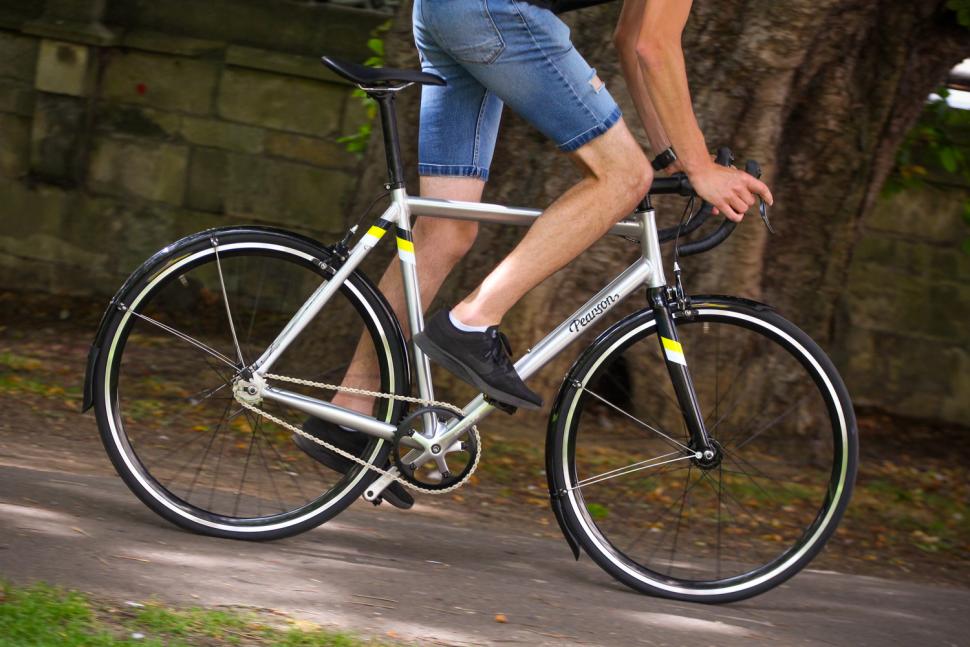

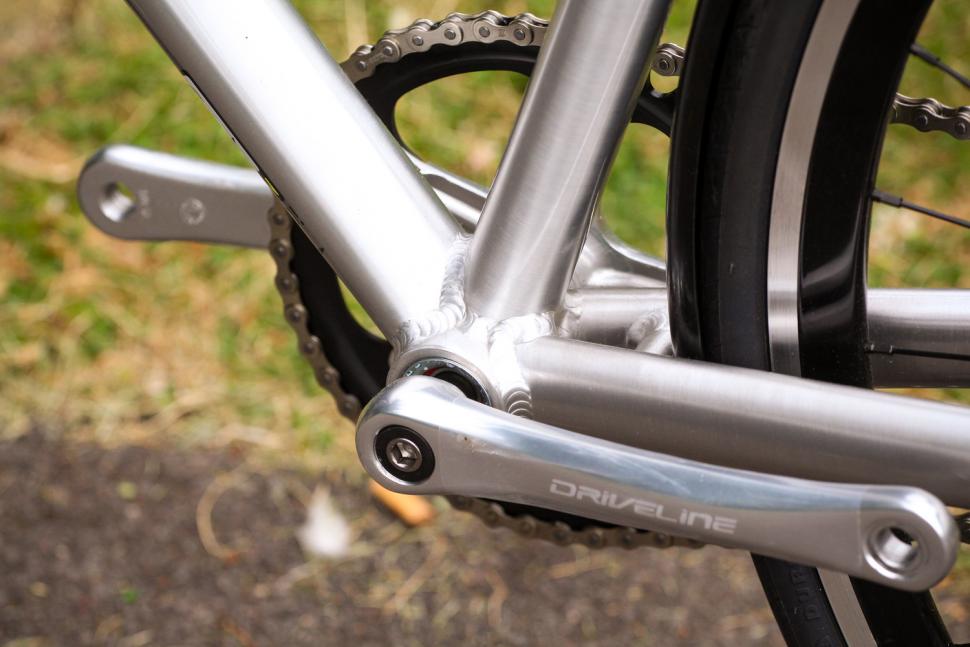

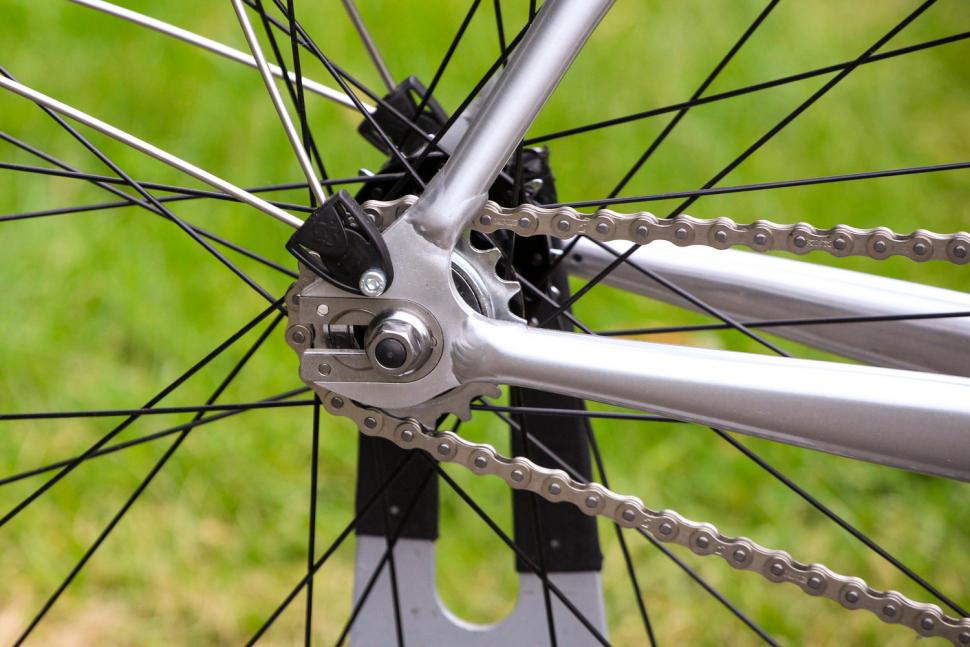
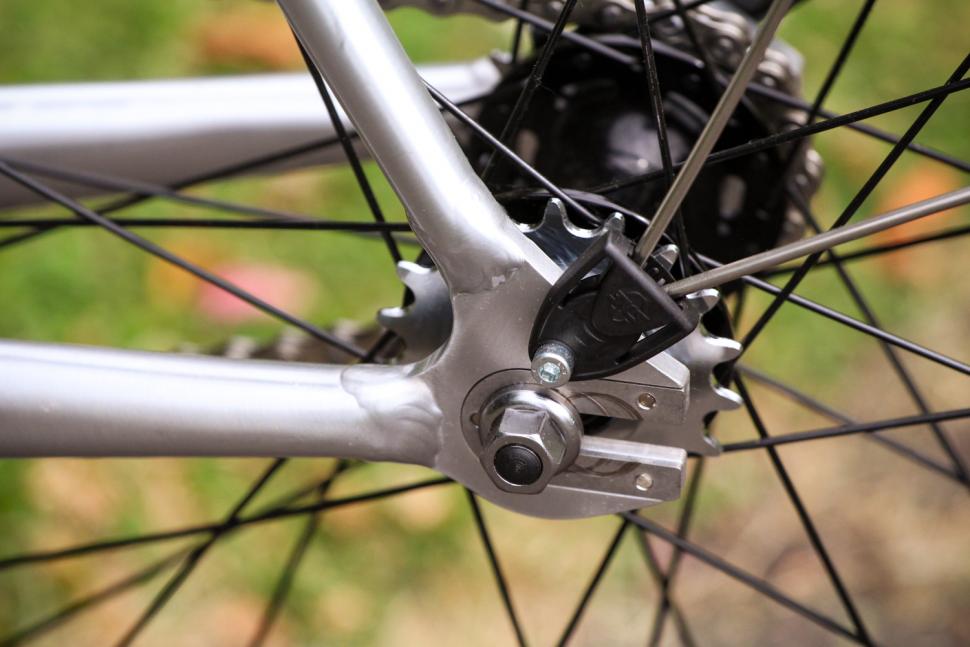

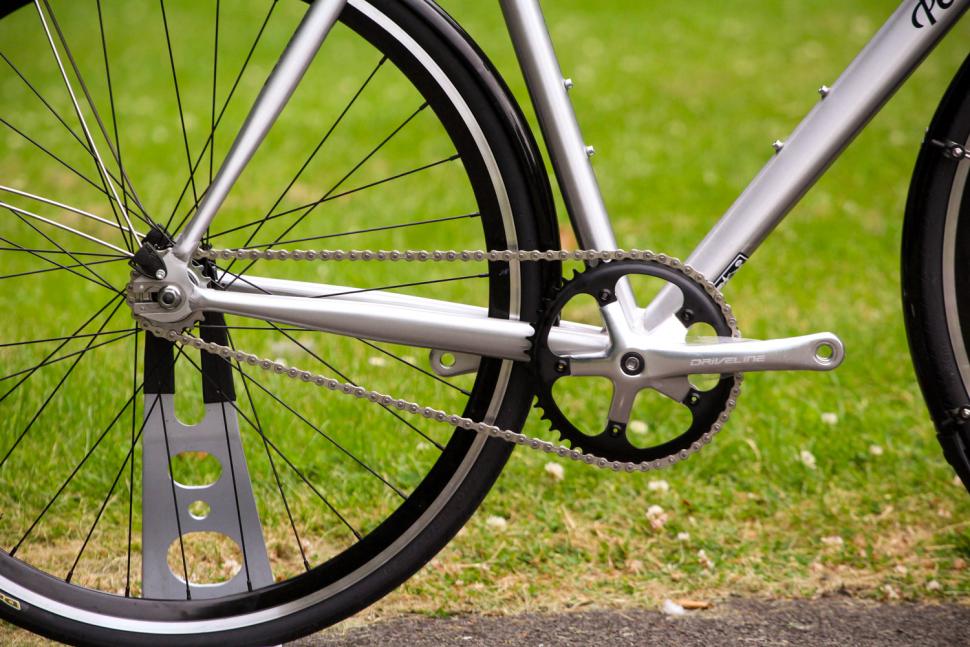



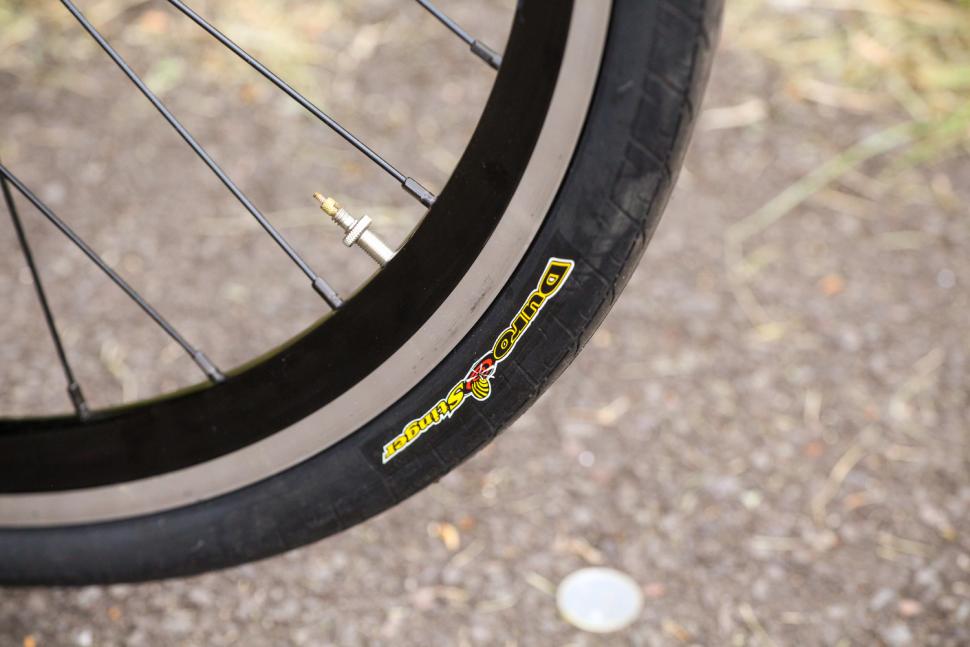




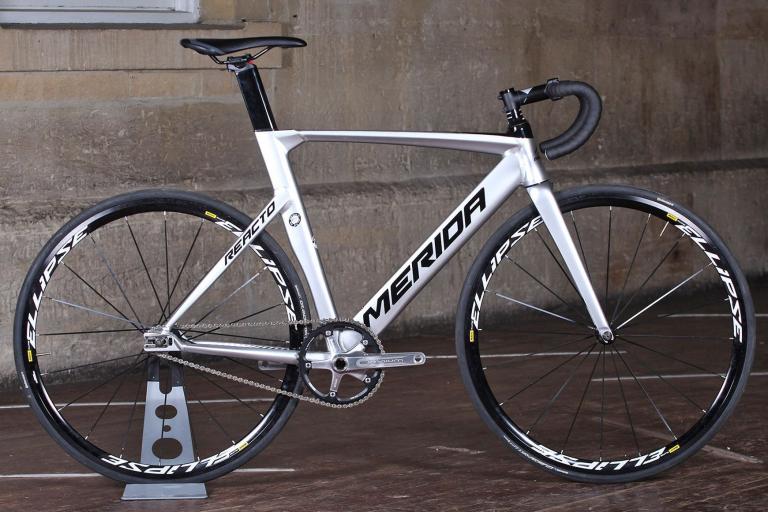
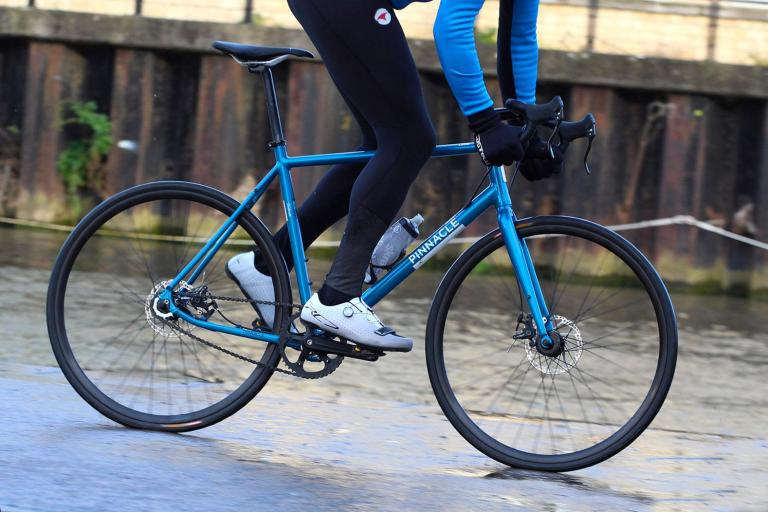

Add new comment
15 comments
I agree that this frame is very good indeed. I had an older version (the touche), which I sold because of knee problems but I keep coming back to considering a new one. Power transfer, comfort and accelarartion are excellent. If Pearson made a geared version of exactly the same bike coming in at a similar weight, it would make an extremely versatile bike for anyone wanting to get into serious all year trainng and riding, even racing.
However, the article is a bit misleading in that it suggests Pearson will give you a fitting service as part of the purchase, like Condor Cycles do. They won't - not even swapping out a too-long stem. The price here is just for the bike. It doesn't even include mudguards. You are now looking at £940 for the basic bike in the right size with guards. The Genesis Flyer, which is cited as comparable here, is still £200 less than this.
So while I highly rate Pearson of Sutton, one of the country's oldest bike shops offering first rate customer service, I fear this is too much to be asking for a single speed which, despite what this article says, remains a very limiting riding option.
Despite this bike being a really fine one, for me the price hike since this article was published, and the lack of a fitting service included in that price, tips the balance between reasonable and poor value. At the same time, I'm all for supporting good LBSs and not buying online and maybe excessive price is just what you have to pay to ensure places like Pearson stay in business.
My LBS (Geoffrey Butler in Croydon) has struggled in recent times (helped by temporary COVID boom) and it'd be a huge shame for Croydon cyclist and clubs if it went out of business. We can't complain about the loss of the good LBS while we purchse nice bikes online. Local, cheap, high quality. Choose any two!
See those little stainless steel plates on the outside of the rear dropouts? I woudn't buy a single speeder which didn't also have them on the inside of the dropouts.
On my Eastway TR1, the inside surface of the dropouts is so chewed up that moving/aligning the wheel is becoming more hassle than it's worth. I'm eying an 8-Bar frame as a replacement.
yeah, but where do you get the spray on hipster shorts....
I’m fond of a single speed commutewagon and use a Genesis Flyer. I think it cost me £550 new. £800+ is way too much for this style of bike, and these aren’t posh bike brands either.
I also think Genesis bikes are overpriced these days. The fun of a single speed bike is the lightness, simplicity and cheapness. I’m not sure the Pearson is any of these things.
£840? That is remarkably poor value - not sure Pearson will shift many of these...
I recently stripped all the Tiagra kit off my 1986 531 Raleigh frame and converted it to single speed. Saved about 1kg and at the same time bunged on an old set of deep Cosmics with 23mm GP4000s I had kicking around.
Now I'm trying to work out why I'm setting PBs on my commute that I've been doing for over 10 years on a wide variety of geared bikes!
Have a look at your heart rate vs speed. The last fixed ride I did they were a mirror image of each other, but maybe I wasn't working hard enough?
In my case, as I spun out my heart rate dropped. This sounds bad but it might explain why on fixed it often feels easier to attack hills, because I'm getting lots of rest on the flat due to the very high cadence.
Whoever put them mudguards on needs a slap round the face with a wet fish! The quick release mount goes on the front mudguard, not the rear!!
You'll be straight over the bars if anything gets caught between the front wheel and guard.
On a singlespeed with horizontal dropouts you need some way of quickly taking the mudguard (partially) off so you can get the wheel out to fix a puncture etc. so using a quick release mount on the rear is not uncommon.
There should be one on the front as well. though I wouldn't say it's a necessity. Good quality mudgaurds from companies like Gilles Berthoud and Honjo aren't supplied with QR mounts and I've yet to have been thrown off?! Might be different with cheaper plastic guards though.
Fair point. That does seem a neat way to get around the horizontal drop out issues.
But as you say, they ought to be on the front too. Although I’ve never personally had a front mudguard pop out of the quick release mount either, it's probably worth £6 to never find out whether it’s necessary or not
https://www.sjscycles.co.uk/mudguards/sks-secu-clip-30mm-each/
Any idea what brand the rear sprocket is? Having learnt from experience (Charge, I'm looking at you) that SSs are often specced with sprockets made of cheese, if this is a cheapo it would seriously put me off buying it. Yes, I know it's easy to replace, but I want to buy something that doesn't grind itself to death within a month or so of riding. That gearing sounds a bit high for my neck of the woods in the SW UK, the Charge is 42x16 which is ok for all but the worst hills.
"However, one thing you might not expect is the 170mm crank length"
Given that many single speeds are road going versions of track bikes and track bikes have short cranks to prevent pedal strike, I'd say it's not that unexpected.
With regards to the weight, as single speeds aren't for hilly areas it's not such a factor. My Kona Paddywagon is just under 11kg although it's fully steel. However as a bike it's great to ride and a lot of fun, I've done some pretty long rides on it like from London to Norwich.
BTW when you ride fixed you may be a masochist, not a sadist...
That seems to be the norm for mainstream fully built singlespeeds, see Genesis, Pinnacle etc.
Would love to know why, would think for the money they could afford some lighter kit!
My Charge Plug has built up to 10kg with guards, but that's based around 32mm tyres and guards to fit.
My Specialized Allez, for not much more money, is 9.5kg with guards and 2x11 drivetrain.. Feels like you're paying for the 'privilege' of riding Singlespeed...
Surprised you didn't comment on the weight - nine and a half kilos seems a lot for a single-speed, even with guards. Especially at that price.